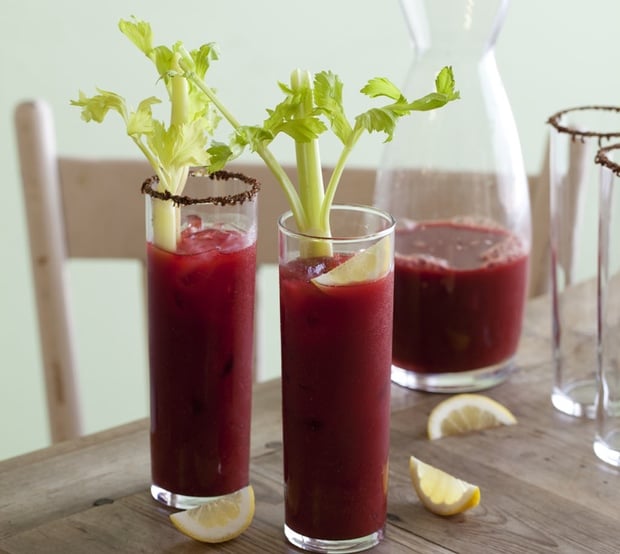Not only is March National Nutrition Month, but it also celebrates the health of two organs that don’t get much love: our kidneys. National Kidney Month aims to bring awareness to those two fist-size organs located on either side of your spine, just under your lower ribs. Why are they so important? Think of your kidneys as a strainer—they keep in some things that are good and get rid of things that are bad. They make urine, remove waste, and help produce red blood cells. Needless to say, if they fail, it means seriously bad news for your health.
And that’s just the start of it. Read on for more facts about your kidneys that you probably don’t know.
1. DC has a big kidney disease problem.
One in nine adult Americans has chronic kidney disease, while Washington leads the nation in the number of new cases of kidney disease each year. According to the National Kidney Foundation, kidney disease kills more people each year than breast cancer, prostate cancer, or leukemia. It’s also the ninth leading cause of death in the country.
2. Kidney disease is a silent killer.
Most people who have kidney disease don’t feel pain in their kidneys. In fact, according to Maryland-based nephrologist Dr. Jeffrey Perlmutter, you typically only feel pain if you have kidney stones, a kidney infection, or some sort of cystic kidney disease. “People can develop progressive chronic kidney disease and have no symptoms until they have reached a very late stage,” he says. By the time you reach kidney failure, your only options are dialysis or a transplant, with transplantation being the best solution. But according to NKF, last year an average of 13 people died per day while waiting for a kidney transplant.
3. Avoid high blood pressure, avoid kidney disease.
While there are some forms of genetic or inherited kidney disease, most cases can be avoided. High blood pressure and diabetes, the most common causes of kidney failure in adults in the US, can both be treated and prevented, according to Dr. Lynne P. Yao, a nephrologist with the USDA. Yao suggests measuring your blood pressure; 120/80 is ideal for a healthy adult. If you have a family history of high blood pressure, high cholesterol, or diabetes, doctors encourage you to get screened for kidney disease. The National Kidney Foundation of DC hosts several free kidney screenings (KEEP screenings) across our area that are usually held on a monthly basis.
4. A low-sodium diet makes for happy kidneys.
One way to decrease your blood pressure is to decrease your daily sodium intake. Jessica Goldman Foung of the blog Sodium Girl is one of the nation’s go-to gurus when it comes to low-sodium snacks and meals. After lupus caused her own kidneys to fail, Goldman Foung decided to dedicate her time to creating tasty, low-sodium treats for herself and others. “Salt is not the only spice on the rack,” she says. Try flavoring your food with other spices and herbs such as cumin, paprika, or basil. “Remember that foods naturally contain sodium. When a recipe is typically salty, use produce and proteins that have higher amounts of sodium— celery, beets, cantaloupe, and meat—to give it that ‘salty’ oomph without the shaker,” says Goldman Foung.
Try this easy, low-sodium recipe for Bloody Marys from Goldman Foung’s book, Sodium Girl’s Limitless Low-Sodium Cookbook.
Makes 10 servings
4 large celery stalks, with extra stems for garnish
2 small red beets, trimmed and peeled
1½ red bell pepper, stemmed and seeded
4 cups no-salt-added tomato purée 1 (a 24-ounce jar has a little more than 3 cups, so you can always fill the jar with 1 cup water and shake to loosen the leftover tomato purée to make 4 cups)
1 to 2 teaspoons prepared low-sodium horseradish
1 to 2 teaspoons freshly ground black pepper
2 teaspoons smoked paprika
½ to 1 teaspoon cayenne pepper
2 lemons
1 tablespoon white wine vinegar
Ice, for garnish
1) If using a juicer, juice the celery, beets, and bell pepper. Place the liquid into a pitcher or large mixing bowl and add the tomato purée. If using a blender, put the celery, beets, bell pepper, and tomato purée into a blender. Pulse until you have a vegetable smoothie. Then make a sturdy pouch out of some folded cheesecloth and carefully pour the blended veggies into it over a large bowl or pitcher.
2) Gather the cheesecloth at the top to close and then squeeze until all the juice runs out of the cheesecloth and all you have left inside is dry veggie pulp. (If you don’t have cheesecloth, you can also pour the veggie smoothie into a fine-mesh sieve and use a wooden spoon or the bottom of a ladle to press down on the purée, squeezing the juice through until you have strained every bit into the pitcher or bowl.) Set all your vegetable scraps aside.
3) Add horseradish, black pepper, smoked paprika, cayenne, juice of one lemon, and vinegar to the juice. Whisk together and taste, adjusting the spices according to your cocktail preferences.
4) Chill the mixture for 15 minutes minimum or two hours maximum.
5) When ready to serve, fill glasses with ice. Pour in Bloody Mary mixture and add a celery stalk for garnish. Cut the remaining lemon into wedges and offer them to guests as well for an extra-citrusy punch. Stir, sip, and savor.
Jummy Olabanji is a reporter at ABC 7 News. She is an avid supporter of the National Kidney Foundation.













